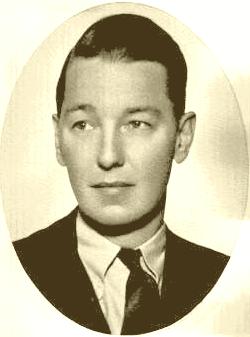Unverifiable material may be challenged and removed.
 This article has been tagged since August 2007.
This article has been tagged since August 2007.Robert Edward Crane (July 13, 1928 – June 29, 1978) was an American disc jockey and Emmy award-nominated actor, best known for his performance as Colonel Robert E. Hogan in the television sitcom Hogan's Heroes from 1965 to 1971.
Crane was born in Waterbury, Connecticut. He dropped out of high school [1]in 1946 and became a drummer, performing with dance bands and a symphony orchestra. In 1949, he married high school sweetheart Anne Terzian; they eventually had three children, Deborah Ann, Karen Leslie, and Robert David (known as "Bob, Jr."). He later divorced and remarried, producing another son. His death by murder remains controversial.
Hogan's Heroes
Following the cancellation of Hogan's Heroes in 1971, Crane continued to act, appearing in two Disney films and a number of TV shows, including Police Woman, Quincy, M.E., and The Love Boat. A second series of his own, 1975's The Bob Crane Show, was cancelled by NBC after three months.
During the run of Hogan's Heroes, Crane met John Henry Carpenter, an electronics expert who sold VCRs. Carpenter is alleged to have turned Crane into a life of sex and early pornographic movies made by the two. Although Crane's family contests this version of the story, it is a fact that Crane made home videotapes of numerous sexual orgies, using video technology supplied by Carpenter, with Carpenter also usually participating in the orgies. Crane is known to have made pornographic films as early as 1956.
On one late night in 1978, Crane allegedly called Carpenter to tell him that their friendship was over. The following day, Crane was discovered violently bludgeoned to death with a weapon that was never found but believed to be a camera tripod at the Winfield Place Apartments in Scottsdale, Arizona, where he had been appearing in a dinner theatre production of a play entitled Beginner's Luck at the Windmill Dinner Theatre.
According to an episode of A&E's Cold Case Files on the subject, police officers who arrived at the scene of the crime noted that Carpenter called the residence several times and didn't seem surprised that the police were there. This immediately raised suspicion against Carpenter, and the car he had rented the previous day was impounded by the police. In the car several blood smears were found that matched Crane's blood type. At that time DNA testing didn't exist to confirm if it was Crane's blood or not. Due to the lack of evidence the district attorney declined to file charges and the case went cold.
Fourteen years after the murder in 1992 the case was reopened. An attempt to test the blood found in the car Carpenter rented failed to produce a result due to improper preservation of the evidence. The detective in charge instead hoped a picture of what appeared to be a piece of unidentified material taken off the rental car (the physical bit of unidentified material had been lost) would incriminate Carpenter. He was arrested and indicted. During Carpenter's trial in 1994, the prosecution showed videotape of Crane and Carpenter engaging in sex with the same woman to demonstrate their close relationship. Carpenter was acquitted. Both the murder and the motive remain officially unsolved. Carpenter maintained his innocence until his death on September 4 1998.
Decline and fall
Crane's life and murder were the subject of the 2002 film Auto Focus, directed by Paul Schrader. The film portrays Crane as a happily married, churchgoing family man and popular L.A. disc jockey who suddenly becomes a Hollywood celebrity, and just as rapidly becomes a sex addict, hanging out at strip clubs and participating in orgies. He documents his exploits on video tape, and is compelled by his addiction into ever more salacious excesses, which eventually crowd everything else out of his life: marriage, family, non-sexual friends, career.
Crane's second wife and their son Scotty objected to the way Crane was portrayed in the film, and took to the media to present their side of the story. Shortly before the film's release, Scotty also started the website www.bobcrane.com to provide documents and testimony that would contest the movie's version of his father's story. The website notably featured clips from a pornographic home video Bob Crane had made in 1956, before his meeting with Carpenter. (Scotty later removed the pornographic clips from the site.)
In an interview posted to the site, Scotty stated, "My father had been having extramarital affairs and photographing hundreds of nude women engaged in sexual activity since the 1940s. He did not suddenly become a 'sex addict' when he met my mother. We have amateur home erotic movies of his that date back to 1956, and I can assure you that the women in those movies were not his wife at the time. [...]
"My father did attend church -- when people died. He wasn't religious and he didn't raise me to be religious. The whole mythology about him being this church-going saint that was brought down and corrupted by the evils of Hollywood -- is really just a dramatic way to dress up a story. But it's totally untrue. He was an overly sexual person from an early age. In the twelve years that my mom knew him, he went to church three times: my baptism, his father's funeral and his own funeral. He never had a family priest for a 'buddy' as Auto Focus depicts".
His last televised appearance was in the Canadian cooking show Celebrity Cooks.
Filmography
Hogan's Heroes
No comments:
Post a Comment